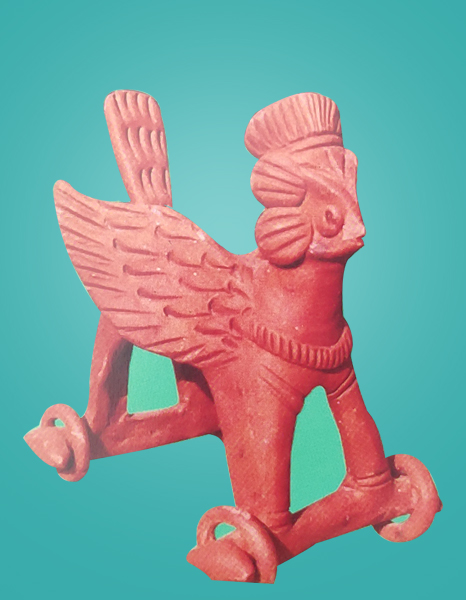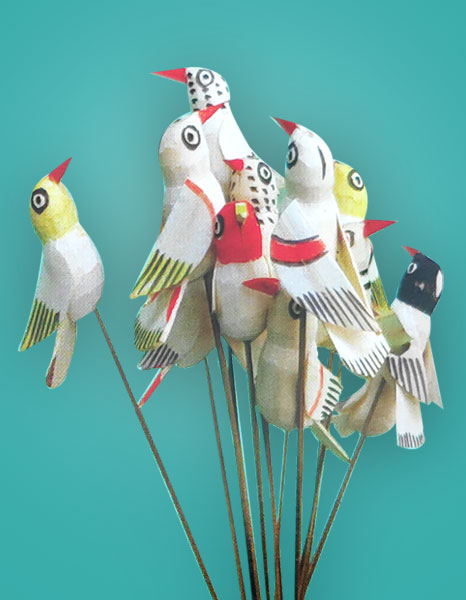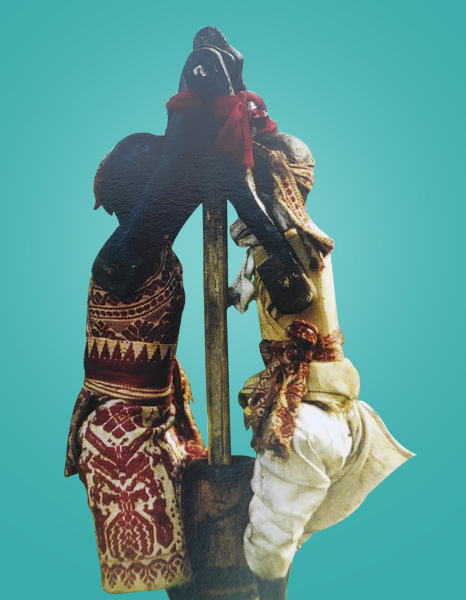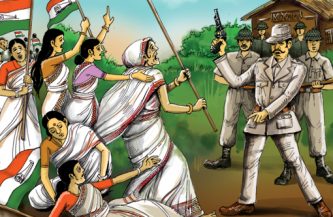Folk Toys of Assam

Civilisations are often defined by their crafts, which are an outcome of beliefs and practices of inhabitants of a particular period of time.
And in the lineage of crafts, toys play a huge role in reflecting the lifestyle of the people. Toys are important not only from the folklore point of view, but also in knowing which materials, art forms and traditions were prevalent in a geographical area.
In Assam, the tradition of toy-making has a rich heritage that is worthy of mention. It is prevalent across the length and breadth of the State, displaying distinct characteristics in different regions.
Here, we will explore the different types of folk toys of Assam and the history of making them.
Folk toys in Assam can be broadly classified into three different types based on the materials used – clay toys, pith toys and toys made with bamboo, wood and other materials.
Clay toys
Among the folk toys found in Assam, clay toys occupy the foremost position both in terms of numbers and variety, and are mainly made in the Brahmaputra Valley. There are two distinct potter communities – Kumars and Hiras – who have been practising toy and utensil-making for a long time.
In Assam, clay toys are fully hand-modelled (no moulds are used) and rarely more than eight to nine inches in height. They are either sun-baked, fire-baked without slip, fire-baked with slip or painted.
In terms of their form, human figures are more commonly used, the most popular among them being the bar-koina putla (bride and groom toys) or simply koina putlas. Though in some areas, particularly in South Kamrup, animal figures appear quite frequently with the most common ones being figures of elephants, horses, deer and birds.
As a general principle, clay toys in Assam are not known to be associated with rituals, unlike in the rest of the country. But a clear exception is seen in some villages of Kamrup (Hajo, Sulakuchi, etc,) where tiny clay birds fashioned by women are used in a ritual called Sare-Barat, which means bird-fast.

Pith toys
Once made in most of the Lower Assam region, pith toy-making today is confined to the westernmost part of the State where are a large number of toys of different varieties along with other articles are still being produced. They have a well-balanced structure, compositional symmetry and chromatic brilliance.
The art of pith-work is believed to have developed in Lower Assam and North Bengal where the material was in natural abundance.
Workmen called Malakar or Phulmali were engaged in making artificial flowers and garlands made of sola.
Pith-work generally involves two parallel art forms – a) fashioning toys and images and b) painting. Pith masks are also very significant forms of art of which Kali Chandi masks and Mahadev (Shiva) masks are important as they portray excellent craftsmanship.
What makes pith toys particularly attractive is the use of extraordinary colour effects that are very bright and pleasing. The most commonly used colours are red, yellow, black, green and blue, among others.
Most of the pith articles, whether images or paintings, are directly or indirectly connected with the religious and semi-religious beliefs and practices of the area.

Toys made of wood, bamboo and other materials
Assam has a very old tradition of wood-carving too, particularly associated with satras and namghars. Figures of door-keepers, Garuda and Hanuman, among others, carved out of wood and often painted in an indigenous traditional style, constitute important Assamese Vaishnava implements.
There’s another class of toys representing birds and animals made with bamboo silvers with commendable skill and artistry. Toys made of molasses in the shape of birds, animals, etc, too are very popular in local fairs and festivals.
Assam, thus, has a rich history of toy-making. It has different forms of moulding, and some shapes are unique to the region that give them an aesthetic appeal. As we move ahead with the mechanical world, let us trace back our roots and explore more toys and folklores.

Source:
Folk toys of Assam by Dr. Birendranath Datta
Publisher: Directorate of Cultural Affairs, Govt. of Assam, 1986.





